Kite
In mathematics, a kite shape is a quadrilateral with two pairs of sides that are of equal length. These equal sides share a vertex, or "corner." By definition, a kite shape may be either convex or concave, but it is often shown only in its convex form.

You may think of the kite that can fly, like the one below, when you think of the shape of a kite.

Sides and angles of a kite
Sides of a kite
Like a parallelogram, a kite has two pairs of congruent sides. Unlike a parallelogram the congruent pairs of sides are not opposite of each other.
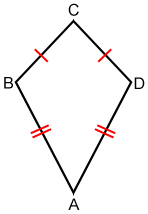
For kite ABCD above, congruent sides BC and CD are adjacent to each other as are congruent sides AB and AD.
Angles of kite
The angles formed by the adjacent, non-congruent sides of the kite are congruent.
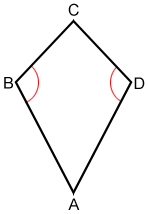
Sides AB and BC and sides CD and DA are adjacent non-congruent sides for kite ABCD above, so ∠B≅∠D.
Diagonals of a kite
A kite has two diagonals.
Diagonals are perpendicular to each other:
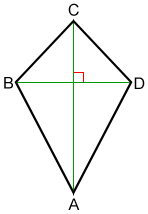
For kite ABCD shown above, BA ≅ DA and BC ≅ DC. Therefore, △ABD and △CBD are isosceles triangles that share a base, BD. Based on this, we know that line segment from A and C to the midpoint of BD is the heights of △ABD and △CBD. Therefore, diagonals AC and BD are perpendicular. Diagonal AC is the perpendicular bisector of diagonal BD.
Diagonals that bisect the angles of a kite
One of the diagonals in a kite bisects its non-congruent angles.
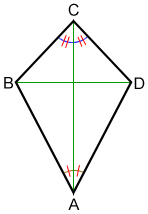
Area of a kite
The area of a kite is often calculated based on the length of the diagonals, d1 and d2, using the equation:

A special kite
In most cases, there are two pairs of congruent sides of a kite, that are not congruent to each other. Below is one special case where all the sides are congruent.
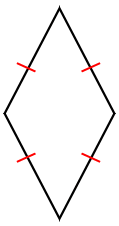
If all the sides of the kite are congruent, then the kite is a rhombus, such as the one shown above.
